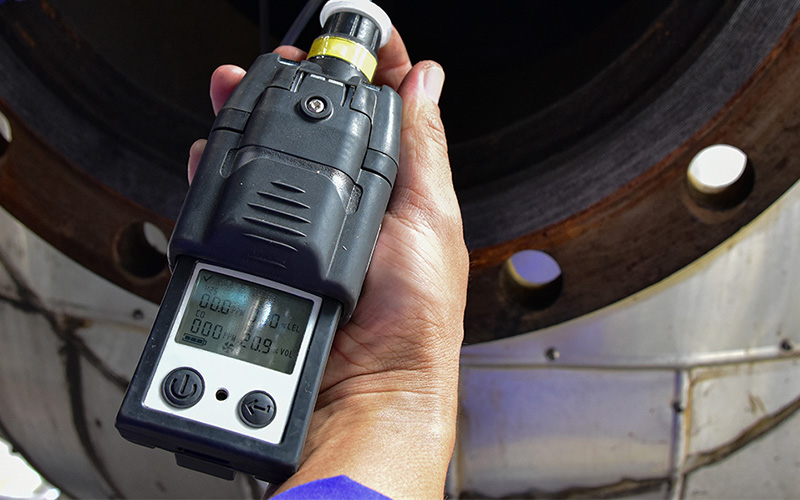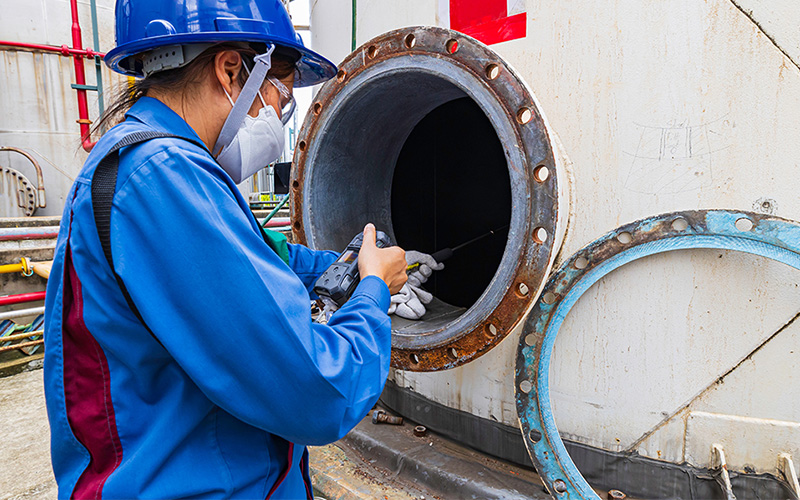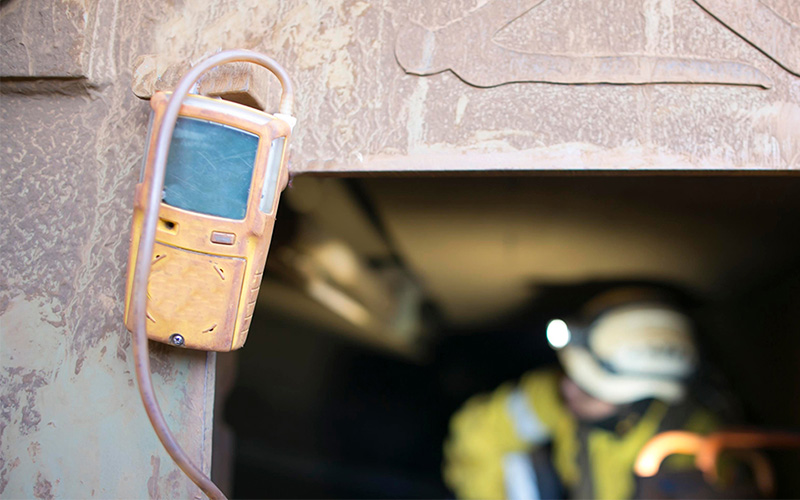KEEPING READINGS ACCURATE
The Problem: Gas detectors are vital for industrial safety, but they are susceptible to sensor drift (a gradual, subtle change in a sensor's electrical output and accuracy over time) and degradation (a more pronounced decline, often leading to complete failure).
The Culprits: This decline is accelerated by:
Harsh Environmental Conditions: Extreme temperatures, fluctuating humidity, and corrosive agents.
Exposure to High Gas Concentrations: Prolonged or repeated exposure can overwhelm or chemically alter the sensing element.
Sensor Poisoning: Certain substances like silicones, chlorinated hydrocarbons, heavy metals, or even cleaning agents can permanently damage the sensor.
Mechanical Stress: Physical shocks or constant vibrations.
The Peril: Inaccurate readings can lead to serious safety lapses, including false alarms (causing downtime and complacency) or, most critically, missed alarms (personnel unknowingly exposed to hazards).
The Solution: Regular Calibration: The most effective defense is regular calibration, the process of adjusting a sensor’s output to match a known concentration of certified span gas, essentially "resetting" its accuracy.
Key Aspects: An effective program requires determining the right frequency (based on the environment and manufacturer's recommendations), using certified calibration gas, employing trained personnel, and maintaining meticulous documentation.
Bump Tests: Regular "bump tests" are also recommended as a quick check to confirm the sensor responds to gas between full calibrations.
Holistic Approach: A comprehensive strategy also includes proper sensor selection for the specific environment, routine maintenance and cleaning, environmental control, and establishing a proactive sensor replacement schedule rather than waiting for failure.

CALIBRATE WITH CONFIDENCE
Understanding the causes of calibration errors and implementing best practices are essential steps in maintaining a safe environment.
Common Causes of Calibration Failure
A gas monitor's calibration confirms that the sensor is accurately measuring gas concentrations. If the monitor rejects the calibration, it’s a critical sign that something is wrong. Here are the most common culprits:
1. Expired or Incorrect Calibration Gas
Calibration gas provides the known standard against which the monitor's sensors are adjusted.
Expired Gas: Over time, the concentration of gas in the cylinder can degrade or become unstable, especially for reactive gases like H2S (hydrogen sulfide) or CL2 (chlorine). Using an expired gas mixture means calibrating the monitor against a false standard, leading to inaccurate readings.
Incorrect Gas: Using the wrong gas concentration (e.g., 50 ppm CO when the monitor expects 100 ppm) or the wrong gas type entirely will result in a failed calibration. Always match the gas type and concentration to the monitor's specifications.
2. Sensor Lifespan and Degradation
Gas sensors, particularly electrochemical sensors used for toxic gases and catalytic bead sensors for combustible gases, have a finite operational life.
End-of-Life: Sensors nearing the end of their lifespan will often become less responsive, drift excessively, or fail to hold a calibration. They simply can no longer reliably detect or measure the target gas.
Poisoning or Inhibition: Certain substances, such as silicone vapors, heavy hydrocarbons, or high concentrations of H2S, can "poison" or inhibit the sensor's active material, leading to permanent damage and calibration failure.
3. Environmental Factors
The environment in which calibration is performed can significantly impact the process.
Temperature and Humidity: Gas monitors are typically calibrated at a specific temperature and humidity range. Extreme deviations (e.g., calibrating in a very cold or humid environment) can affect the sensor's electronic response, causing the calibration to fail. Always allow monitors to acclimatize to the calibration environment.
Pressure: While less common, significant changes in atmospheric pressure can influence some sensor types, requiring adjustment or compensation during calibration.
Best Practices and Solutions
Preventing calibration errors requires a proactive, systematic approach embedded in a robust maintenance program.
| Cause | Best Practice / Solution |
| Expired/Incorrect Gas | Check Expiration Dates: Visually inspect all calibration gas cylinders and discard any that are past their expiration date. Verify Specifications: Always match the cylinder's gas type and concentration to the monitor's required values. Store cylinders correctly to avoid degradation. |
| Sensor Degradation | Monitor Sensor Health: Most modern monitors provide a sensor life indication. Follow the manufacturer's recommended replacement schedule (e.g., every 2-3 years) even if the sensor appears operational. Replace any sensor that repeatedly fails calibration. |
| Environmental Factors | Acclimatization: Calibrate monitors in an environment that is within the monitor's specified operational range for temperature and humidity. Allow stabilization before calibration, especially when moving a monitor from a cold outdoors to a warm indoor area. |
| General Failure | Use Factory Equipment: Utilize the manufacturer's recommended flow regulators and tubing, as incorrect flow rates can prevent proper sensor exposure. Bump Test Regularly: Perform a quick "bump test" (exposure to gas without full adjustment) before each use to verify the monitor alarms and the sensor responds. |
COMING SOON
STOP FALSE ALARMS
This occurs when a sensor detects a non-target gas as if it were the intended hazard, leading to false alarms. For example, a sensor designed for one hydrocarbon might react to another present in the environment. This undermines trust in the system and can lead to alarms being ignored.

COMING SOON

STOP FALSE NEGATIVES
Exposure to certain chemicals or contaminants (e.g., silicone, lead, sulfur compounds) can chemically damage or "poison" a catalytic or electrochemical sensor, leading to a permanent loss of sensitivity or complete failure. This can cause the sensor to read zero even when gas is present, which is extremely dangerous.
COMING SOON
LOCATION IS KEY
For fixed gas detectors, incorrect positioning is a major problem. Gases lighter than air (like Methane) should have sensors near the ceiling, while heavier gases (like Propane or H₂S) should have sensors placed closer to the floor. Incorrect placement can delay or prevent the detection of a leak.

COMING SOON

STAY CHARGED AND PROTECTED
For portable monitors, issues include batteries not holding a charge or physical damage to the charging contacts. For fixed systems, problems range from power surges and interruptions to loose wiring, poor grounding, or electromagnetic interference (EMI) from other industrial equipment, which can all cause system malfunction or signal loss.
COMING SOON
DON'T SLACK ON MAINTENANCE
Gas detectors aren't "set-it-and-forget-it" tools. A failure to perform regular bump testing and scheduled full calibration is a frequent cause of equipment failure and inaccurate readings. Compounding this, insufficient worker training on proper device operation, maintenance, and alarm response protocols remains a critical safety challenge.
